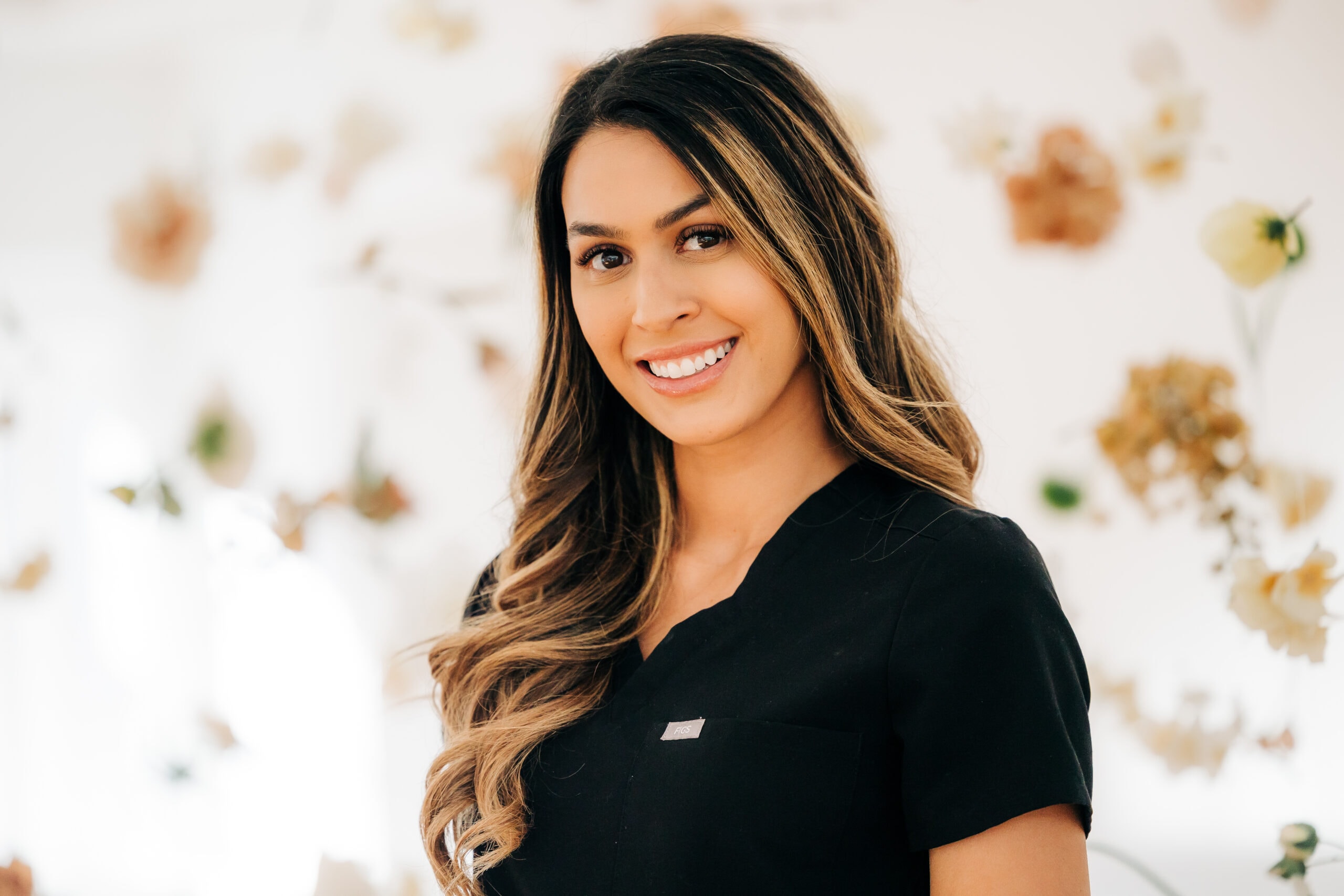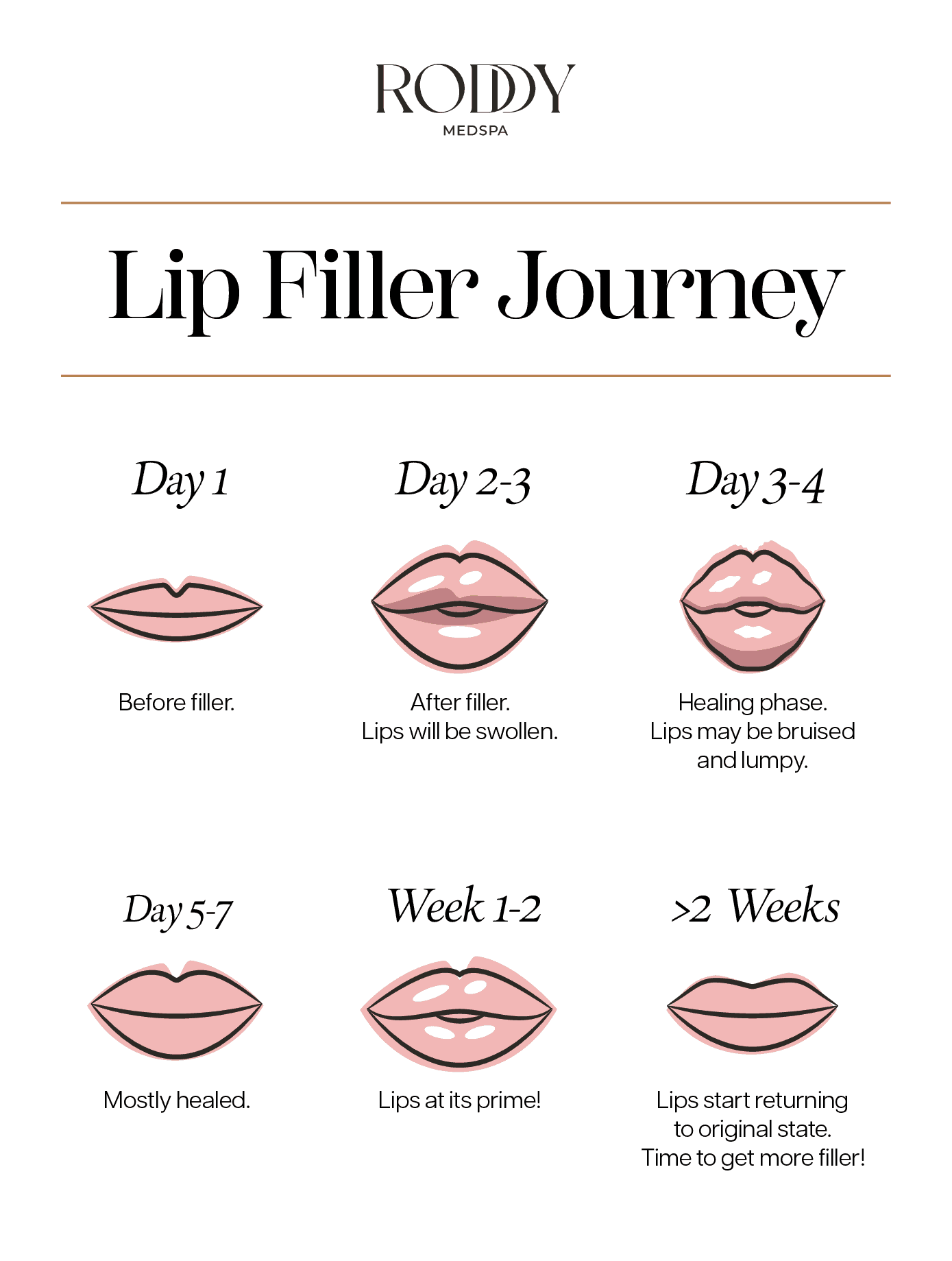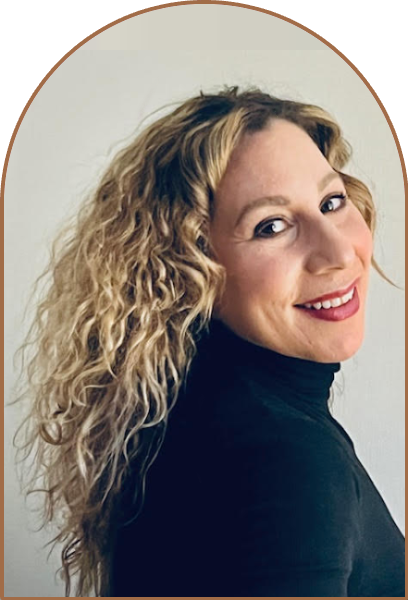The Ultimate Guide To Lip Fillers

Knowledge is power—and the first step to luscious lips.
If you’ve ever found yourself daydreaming about fuller lips, you’re not alone. You’re also not alone if you’ve ever watched the Real Housewives, concluded lip fillers were a go-big-or-go-home situation, and shied away from getting injected. Rest assured, though, there’s a happy medium. In fact, with a great injector, you can fake it like you were born with your ideal pout.
As with all beauty procedures, the most important thing you can do is arm yourself with as much information before you even reach out to anyone for a consult. Read on for the key facts about lip fillers so you can walk in fearless and walk out fabulous.
What exactly are lip fillers?
Lip fillers (a.k.a. lip injections) are cosmetic treatments in which hyaluronic acid is injected into lips with a needle. Hyaluronic acid, or HA, is a naturally occurring molecule in your body that retains up to 1,000 times its weight in water and gives skin a healthy, hydrated, and plump appearance.
When HA is injected into lips, it attracts water, making the target area expand and giving it a fuller look.
What are the benefits of lip fillers?
Aside from adding volume and plumpness to the lips, lip fillers can also even out asymmetry, define the outline of your lips, and smooth away lines. As a bonus, lip fillers can allay chronically chapped lips.
What are the different types of lip fillers?
There are several fillers available on the market, many of which you may’ve never heard of. To name a few of the more common options, there’s Juvederm Ultra XC, Juvederm Ultra Plus XC, Volbella, Restylane, and Restylane Silk. Each filler differs in viscosity (thickness), water affinity (how much it attracts water), and duration (how long they last).
Your injector’s job is to choose which filler (or combination of fillers) are best for your unique goals, while also taking into consideration your baseline, if you’ve had filler before, and other critical factors. If you ever stumble upon an injector with only one type of filler, run for the hills!
How long do lip fillers last?
The rate at which fillers naturally dissolve varies from person to person. However, most people will find their lip fillers last between six months to a year.
I want my thin lips to look significantly fuller. Will lip fillers make my mouth look fake and overdone?
If you work with a qualified and seasoned injector, no! It’s all based on quantity of product used and the quality of the injector’s technique. Bear in mind, though, that if you start with thin lips, you will likely need multiple syringes’ worth of filler and multiple visits to achieve a full-on voluminous look.
What’s the difference between lip filler and lip flip?
As we mentioned, lip fillers are performed with hyaluronic acid. Lip flips, on the other hand, inject Botox above the edge of the upper lip. This essentially “freezes” those muscles, which “flips” the lip out, creating the illusion of a, well, poutier pout. The downside of lip flips is that they only last about six weeks.
Who should avoid lip fillers?
The main contraindications to any dermal filler treatments, including lip treatments, are pregnancy and breastfeeding. If you’ve had any dental procedures, been sick with a cold, sinusitis, or the flu, or been on antibiotics within the past two weeks, hold off for at least two weeks before making an appointment. The aforementioned scenarios weaken your immune system, and there’s a chance your body might attack the site of the injection if your body hasn’t fully healed yet.
What should I do before my lip filler appointment?
Preparation for lip fillers is more about what not to do. Two to three days before your treatment, discontinue taking blood-thinning supplements, such as vitamin E, ginkgo biloba, omega-3s, and fish oil, as well as drinking alcohol and smoking. If your doc gives you the thumbs-up, also stop taking NSAIDS (non-steroidal anti-inflammatory drugs) such as ibuprofen, Motrin, Naproxen, and Advil. These, too, thin your blood, making you more prone to bleeding and bruising.
On the flip side, eat fresh pineapples every day starting from three days before your treatment until three days after. Pineapple has an enzyme called bromelain that studies suggest can help the body decrease inflammation, swelling, and bruising.
All you have to do on the day of your appointment is to clean your face and show up without any makeup on. If you want, take acetaminophen (e.g. Tylenol®), which is safe to take before and after your injections.
What questions should I ask my injector during the consultation?
First of all, please do have a consultation before making an appointment! No matter how reputable someone is, you want to make sure they’re the right fit for you. Below are some important questions along with the appropriate answers you should receive:
- May I see before-and-after photos of patients you’ve personally injected? The injector should say: Yes, absolutely!
- Do you use one type of filler or multiple? The injector should say: Depends on your goals and your lip anatomy—but I always have an assortment to choose from.
- How realistic are my goals? The injector should NOT guarantee anything drastic and give you plenty of caveats. They should also demonstrate clear knowledge on technique, which type of filler(s) they recommend and why, and what they expect the results will look like.
- Can you make suggestions based on how the final look will “match” my face? The injector should say: While it’s your face and your choice, I can give you tips and suggestions, such as how a changed lip might affect the illusion of other areas of your face.
- Which lip filler do you recommend, and why? The injector should give you a clear list of filler types, which area they plan to target, and the general result they expect (and how those results might divert from what you want).
- If I’m not happy with the results, do you offer a complimentary revision? The injector should say: Yes!
What results can I realistically expect?
In many ways, your results are dependent entirely on how well you and your injector communicate! Don’t be shy about what you’re hoping to achieve—even if your dream lips seem impossible. A skilled injector will work with you to get you your best lips based on what lips you’ve seen and loved.
For instance, many people (understandably) want Angelina Jolie’s lips. But because Angelina’s lips are simply an inspiration, your injector can only achieve your version of Angelina. Lip fillers can transform the height, a bit of the shape, the size, and asymmetries, but it will never look exactly like anyone else’s. And that’s a good thing!
Will the lip filler hurt?
During Treatment
Let’s be real—lip fillers hurt! You’re getting pricked with a needle, so there’s bound to be some pain. Fortunately, we’re living in the 21st century so there are some tricks to make it bearable. Your injector should offer multiple options to make sure you’re comfortable during the procedure.
One option is to hold a small vibrating device designed to distract your brain from the injections. You hold the device, while the provider injects. Another option is to apply ice to the area until it’s slightly numb before the needle goes in. Rinse and repeat. Another is to apply a topical numbing cream 20 minutes before the procedure. You’ll still feel something, but you will feel considerably less. Last but not least, you can also ask for a dental block or a “ring block.” This is similar to when you go to the dentist and they numb you so you don’t feel a thing.
After Treatment
Once any numbing wears off, your lips will feel and look swollen and tender to the touch. Tenderness is most prominent the first three days, then subsides day by day thereafter.
What is the healing process like?
Your lips will always be more swollen the day after your injections. Give it a few days for the swelling to go down.
Bruising is also normal. The lip is a vascular area, and even though the goal is to leave no bruising, it’s expected. It can take up to two weeks to vanish completely. Just like any other bruise, it will first appear purple/blue, then as it fades, it will turn yellow before it disappears.
How do I take care of my lips after the procedure?
The first thing you should do is apply ice, ice, and more ice! This will help with swelling (and numbing down some of the soreness). You can also take an Arnica montana supplement or apply arnica cream to help with bruising.
Resist the temptation to touch the area or apply lipstick or lip gloss within the first 24 hours, as that will increase your risk for infection.
What else should you avoid? Strenuous exercise and swimming for 24 hours, and dental procedures for two weeks.
What are the risks of getting lip fillers?
Truth be told, while rare, lip fillers do come with complications and adverse events.
If you don’t go to a legitimate injector, the most obvious risk you take is a botched job that results in asymmetry, excessive bruising, or unsightly results. You might also experience lumps even after your lips have healed. Lumps can be indicative of a novice injector (improper filler placement) or perhaps even inauthentic product.
The best way to avoid this? Find someone experienced!
The bad news is even if your injector is one of the most elite, expert, world-renowned injectors, the number-one concern with any dermal filler—and every injector’s worst nightmare—are occlusions.
To put it simply, an occlusion is when dermal filler gets lodged into a vein or artery, obstructing blood flow and circulation. Due to the obstruction in the vessel, oxygen is blocked from free flowing, and with no oxygen comes tissue death (necrosis).
So how do you know you have an occlusion? Occlusions can happen either immediately while you’re still in your injector’s chair or hours after you’ve left the office. Symptoms to look out for is severe bruising, blanching (whitening of the skin near bruising), mottling of the skin (blotchy, red/purple marble-looking appearance of the skin), pain, and small pustules (almost like little pimples). These symptoms might also crop up around the nose area and the middle of your eyebrows. If you notice this, call your injector immediately so they can flood the tissue with a dissolvent. If this goes untreated, not only can you have necrosis but also blindness and stroke. If it’s dissolved in a timely manner, the tissue can still be salvaged. Roddy MedSpa always keeps 12 vials of dissolvent in our fridge as part of our emergency plan.
If this sounds scary to you, know that this is quite rare for a skilled injector who is extremely familiar with anatomy: where the most important vessels run, what patterns they follow, and their depth. Plus, necrosis occurs only in 1 in 100,000 cases, according to one study.
A good injector will freshen up on knowledge every year. For instance, at Roddy MedSpa, the utmost care and caution is always taken with continued education, private trainings, an emergency plan set in place, and a plastic surgeon as a medical director. Injectors also take a cadaver course to further enhance knowledge of the human face, skin tissue layers, and blood vessel placement.
What are my options if I don’t like the results?
Fortunately, it’s possible to remove lip fillers with dissolving agents like Hyalenex or Vitrase.
Your injector might give you the option to dissolve your lips completely, wait two weeks, then start from scratch. If it’s a minor change, more filler simply might be added to what you already have.
I’m intrigued. How can I contact you?
If you have additional questions about lip fillers or would like to schedule a consultation and book an appointment, visit us at www.RoddyMedSpa.com, or call us at (781) 627-7070.







